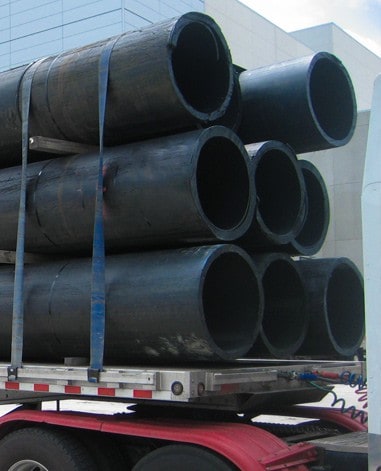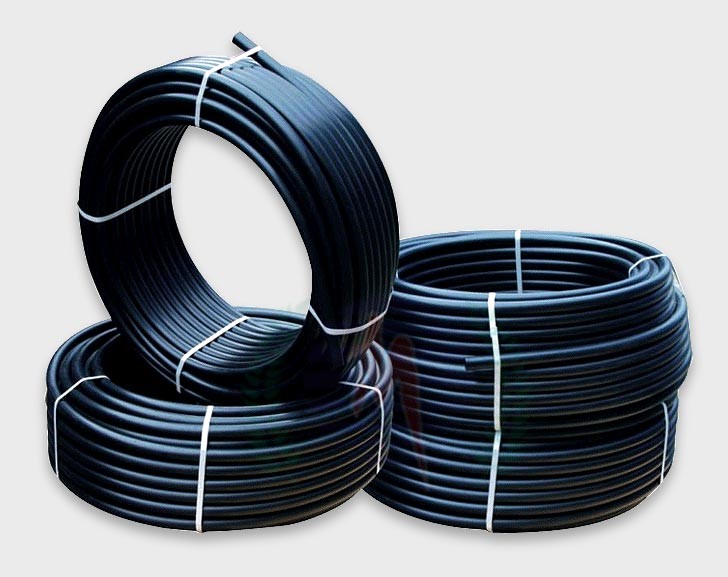The Role of Pipe Manufacturing Midland TX in Driving Local Projects
The Crucial Actions for Successful Installment of HDPE Pipeline in Your Next Project
Successful installation of HDPE pipeline requires cautious preparation and implementation. Key steps consist of evaluating job needs, preparing the site, and selecting appropriate signing up with strategies. Each phase plays a critical role in ensuring the stability and performance of the pipeline. Recognizing these crucial actions can significantly influence the overall success of the job - Midland TX HDPE Pipe Fittings in Stock. However, the nuances of each step might hold the trick to conquering typical difficulties encountered during installation
Comprehending the Advantages of HDPE Pipeline
High-density polyethylene (HDPE) pipeline provides various benefits that make it a preferred choice for various applications. Its high resistance to corrosion and chemicals warranties toughness popular environments, significantly extending the lifespan of installations. Additionally, HDPE's versatility allows for much easier installment, specifically in difficult terrains, as it can bend without breaking. The light-weight nature of HDPE pipe simplifies transport and handling, minimizing labor costs during installment.
HDPE pipe is understood for its low rubbing coefficient, which boosts liquid circulation and minimizes energy usage. Its seamless building and construction reduces the danger of leakages, adding to far better resource management and environmental management. Additionally, HDPE is recyclable, lining up with sustainable practices and minimizing ecological influence. Overall, the mix of strength, flexibility, and eco-friendliness makes HDPE pipe a premium option for a vast array of projects, from water circulation to industrial applications.
Planning Your HDPE Pipeline Setup
When preparing a setup of HDPE pipe, careful consideration of several essential elements is essential to protect a successful project. Initially, task supervisors should assess the specific demands of the pipeline, including the intended use, circulation rates, and environmental problems. Comprehending these criteria will certainly assist the option of suitable pipe dimensions and material quality.
Next, timelines should be developed, factoring in purchase routines and any type of potential delays. Control with local authorities for licenses and governing conformity is also important. Furthermore, a thorough budget plan should be prepared, encompassing all costs associated with materials, labor, and machinery.
Finally, it is necessary to involve a certified group experienced in HDPE pipe setup. Their competence will aid reduce threats, guarantee adherence to sector criteria, and eventually add to the project's success. Complete planning prepares for a smooth installment process and long-lasting performance of the HDPE piping system.
Preparing the Website for Installment
Proper site preparation is necessary for the successful installment of HDPE pipe. Before installation starts, the site must be thoroughly analyzed to assure it meets all essential needs. This includes evaluating the ground for existing structures, utilities, and possible threats that might restrain the installment process.

Proper altitude and positioning need to be established to preserve a consistent gradient for drainage functions. Correct drain around the setup site is likewise essential to avoid water accumulation, which can cause complications down the line.
Strategies for Signing Up With HDPE Water Lines
Accomplishing a trusted link in between HDPE pipelines is crucial for making certain the stability and durability of the setup. Numerous strategies exist for joining these pipelines, each matched for different project demands. Combination welding is one of one of the most common approaches, using heat to bond the pipeline ends with each other, producing a smooth and long lasting connection. This method can be further classified into outlet blend and butt combination, relying on the pipe configurations.
Mechanical installations are an additional choice, using clamps and threaded adapters to sign up with sections of HDPE pipeline. While generally faster to set up, they may require extra maintenance over time. Electrofusion is a customized approach that includes making use of electrical current to heat and fuse the pipelines through particularly designed fittings, ensuring a solid bond. Selecting the suitable joining method is critical, as it straight influences the general efficiency and dependability of the HDPE piping system in the desired application.
Checking and Assessment of Installed Pipes
The screening and evaluation of set up HDPE pipelines are essential to ensuring their capability and long life. This procedure includes aesthetic evaluation methods, stress testing approaches, and leak discovery procedures to determine possible issues. By utilizing these methods, specialists can validate the honesty of the setup before it is put right into usage.
Aesthetic Evaluation Techniques
Using efficient aesthetic evaluation strategies is important for guaranteeing the stability of mounted HDPE pipes. Assessors must systematically examine all visible sections of the pipeline to identify any kind of signs of damages, misalignment, or incorrect setup. Secret indicators to examine include joint integrity, surface area irregularities, and connections. Examiners might utilize devices such as multiplying glasses or video cameras to improve exposure and information. It is important to look for signs of environmental stress and anxiety, such as bending or too much bending, which can compromise performance. Consistent documents of findings enables tracking changes over time and helps guide needed repair work. By sticking to well established visual inspection methods, job teams can significantly lower the threat of future failings and assure long-term dependability of the piping system.
Pressure Evaluating Techniques
Visual assessment functions as an initial procedure, yet it is not enough by itself to guarantee the efficiency of installed HDPE pipelines. Pressure testing techniques are essential for ensuring the honesty of these systems. Normally, hydrostatic testing is employed, where the pipelines are loaded with water and subjected to pressure degrees over the desired operating stress. This approach assists recognize weak points or prospective leaks. Pneumatic screening can additionally be utilized, although it brings greater risks as a result of the compressibility of air. No matter the technique chosen, adhering to industry requirements and security procedures is vital. After conducting stress tests, extensive documentation is needed to validate the outcomes and validate that the setup fulfills all operational requirements before proceeding to the click for source following phase of the job.

Leak Detection Treatments
How can one ensure that installed HDPE pipes are without leaks? Efficient leak discovery treatments are essential to secure the integrity of the system. Aesthetic assessments must be performed, looking for signs of water accumulation or soil disintegration around pipe joints. Following this, stress screening can validate the system's toughness. A typical method is the hydrostatic examination, where water is introduced under pressure, checking for drops that indicate potential leakages. In addition, advanced technologies, such as acoustic sensors or infrared thermography, can find leaks that might not be noticeable. Normal tracking and maintenance further contribute to the durability of HDPE pipes, ensuring they remain leak-free throughout their operational life expectancy. Correct documentation of these procedures is necessary for compliance and future recommendation.
Upkeep Tips for Long-Term Efficiency
To ensure the durability of HDPE pipes, developing a regular assessment timetable is vital. This aggressive method enables the early detection of possible problems, lessening expensive repair services. Additionally, carrying out appropriate cleansing techniques will certainly aid preserve peak performance and prevent buildup that can influence performance.
Routine Inspection Set Up
HDPE pipes are understood for their resilience and resistance to deterioration, developing a normal evaluation routine is crucial for guaranteeing their lasting efficiency. Routine evaluations help determine potential concerns such as leaks, joint honesty, and environmental impacts that might influence the pipeline's capability. It is recommended that assessments take place a minimum of biannually, or a lot more regularly in atmospheres with severe problems. hdpe pipe in stock Midland TX. Throughout these assessments, aesthetic checks must be carried out to find signs of wear or damages. In addition, utilizing technology such as ultrasonic testing can provide additional insights right into the pipeline's condition. By applying a structured examination timetable, task supervisors can proactively attend to issues, therefore expanding the life-span of HDPE pipelines and keeping system efficiency
Appropriate Cleansing Techniques
Correct cleansing strategies play a vital function in preserving the lasting efficiency of HDPE pipelines. Normal cleaning protects against the accumulation of debris, debris, and biofilm, which can result in clogs and minimized flow performance. Operators ought to employ techniques such as high-pressure water jetting or foam cleansing to properly eliminate contaminants without damaging the pipe surface area. It is essential to prevent making use of extreme chemicals that may weaken HDPE material. In addition, arranged maintenance checks must consist of visual inspections for any kind of review signs of wear or damages. Correctly educated personnel should carry out these cleansing processes, making sure conformity with safety and ecological guidelines. By carrying out these methods, the life expectancy of HDPE pipes straight from the source can be considerably prolonged, making sure optimal performance throughout their functional life.
Frequently Asked Questions
What Are the Environmental Impacts of HDPE Pipeline Manufacturing?
The ecological impacts of HDPE pipe production include greenhouse gas discharges, power usage throughout manufacturing, prospective plastic air pollution, and challenges in reusing. However, HDPE's long life and resistance to deterioration can minimize some ecological problems.
Exactly How Does HDPE Pipeline Compare to Various Other Products?

What Devices Are Required for HDPE Pipeline Setup?
Essential tools for HDPE pipe setup include a fusion equipment, pipe cutters, shovels, gauging tape, and safety equipment. Appropriate devices assurances efficient, secure handling and installment, adding to the task's total success and honesty.
Are There Any Specific Regulations for HDPE Pipe Setup?
Details guidelines for HDPE pipeline setup differ by area, frequently governed by regional, state, or federal codes. Compliance with these regulations warranties security, environmental management, and capability, making adherence important for successful job results.
Can HDPE Pipeline Be Recycled After Usage?
Yes, HDPE pipelines can be reused after usage. Their polycarbonate nature enables for reprocessing, making them ideal for recycling into brand-new products. This sustainability facet contributes to environmental conservation and promotes circular economy techniques in building.